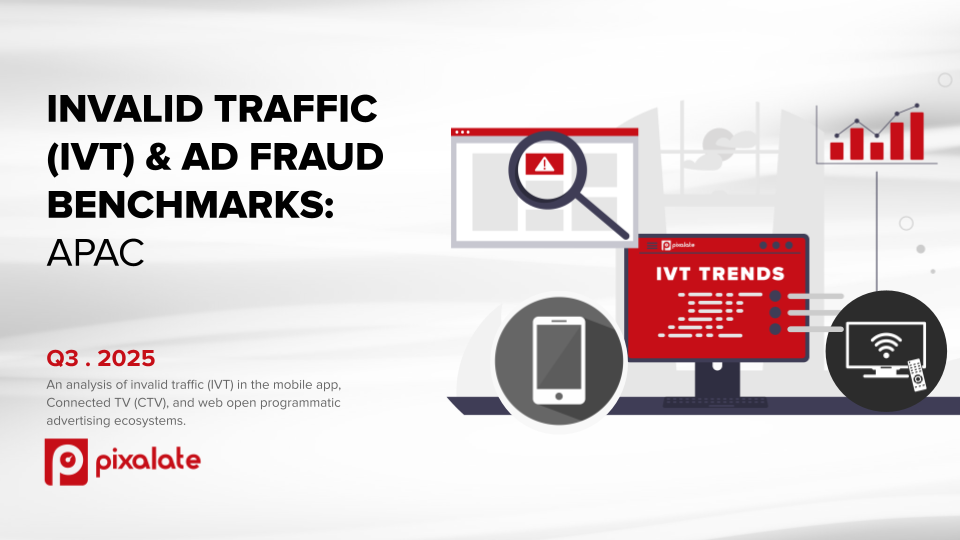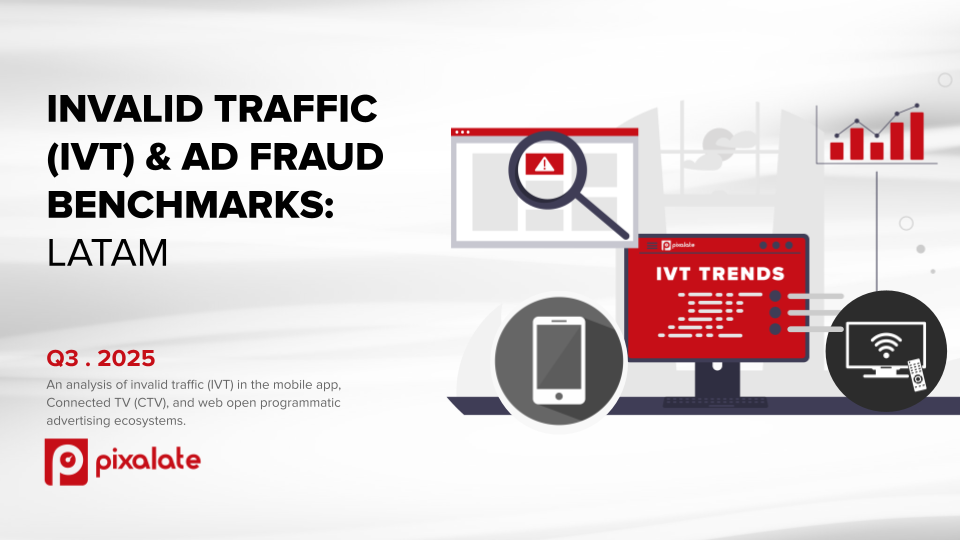Pixalate’s data science team analyzed over 11.9M + mobile apps (including delisted apps) across the Google Play Store and Apple App Store and 31.6B + global open programmatic advertising impressions in April 2024 to compile this research
LONDON, May 17, 2024 -- Pixalate, the market-leading fraud protection, privacy, and compliance analytics platform for Connected TV (CTV) and Mobile Advertising, today released the April 2024 Mobile App Spoofing Reports for the Apple App Store and Google Play Store.
The reports reveal which mobile apps are most at risk of app spoofing. Malicious actors can use invalid traffic (IVT) techniques, such as app spoofing, to disguise the mobile app traffic source. The report ranks the apps most at risk of spoofing by geographic region, including North America, Asia-Pacific (APAC), Europe, the Middle East and Africa (EMEA), and Latin America (LATAM), as measured by Pixalate.
Pixalate’s data science team analyzed over 31.6 billion global open programmatic advertising impressions from over 11.9 million mobile apps (including delisted apps) across the Google Play Store and Apple App Store in April 2024 to compile this research.
Top Apple App Store mobile apps at risk of spoofing in April 2024

Top Google Play Store mobile apps at risk of spoofing in April 2024

Download to see more apps at risk of spoofing in April 2024, as measured by Pixalate:


Pixalate’s App Spoofing reports for other platforms:
Methodology
To compile this research, Pixalate’s data science team took the following steps:
- Identify “Highly Impacted” mobile apps: On each respective platform within each respective region, Pixalate identified apps with the highest rate of spoofed traffic (e.g. the percentage of all traffic purporting to come from the app that does not actually come from the app). In the context of this research, “Highly Impacted” apps are apps that have an app spoofing rate greater than 90% of other apps on a given platform in a given region (or 5%, whichever is lower) and pass an impression volume threshold.
- The “Highly Impacted” apps are then ranked by volume of spoofed impressions.
About Pixalate
Pixalate is a global platform for privacy compliance, ad fraud prevention, and data intelligence in the digital ad supply chain. Founded in 2012, Pixalate’s platform is trusted by regulators, data researchers, advertisers, publishers, ad tech platforms, and financial analysts across the Connected TV (CTV), mobile app, and website ecosystems. Pixalate is MRC-accredited for the detection and filtration of Sophisticated Invalid Traffic (SIVT). www.pixalate.com
Disclaimer
The content of this post, and the App Spoofing Report (the “Report”), reflect Pixalate’s opinions with respect to the factors that Pixalate believes can be useful to the digital media industry. Pixalate’s opinions are just that, opinions, which means that they are neither facts nor guarantees; and neither this press release nor the Report are intended to impugn the standing or reputation of any entity, person or app, but instead, to report findings and apparent trends in the time period studied. Per the MRC, “'Fraud' is not intended to represent fraud as defined in various laws, statutes and ordinances or as conventionally used in U.S. Court or other legal proceedings, but rather a custom definition strictly for advertising measurement purposes. Also per the MRC, “‘Invalid Traffic’ is defined generally as traffic that does not meet certain ad serving quality or completeness criteria, or otherwise does not represent legitimate ad traffic that should be included in measurement counts. Among the reasons why ad traffic may be deemed invalid is it is a result of non-human traffic (spiders, bots, etc.), or activity designed to produce fraudulent traffic.”










